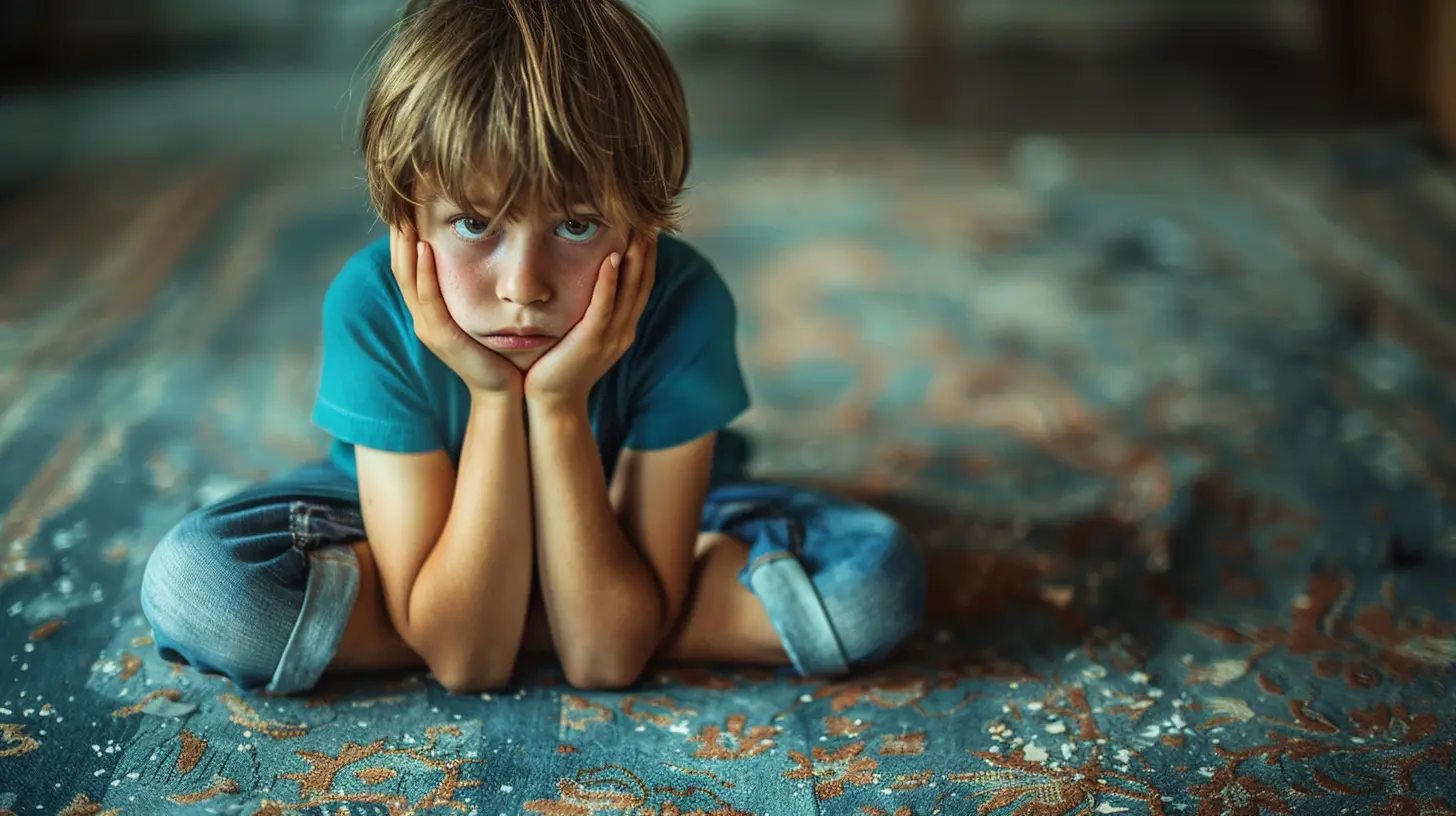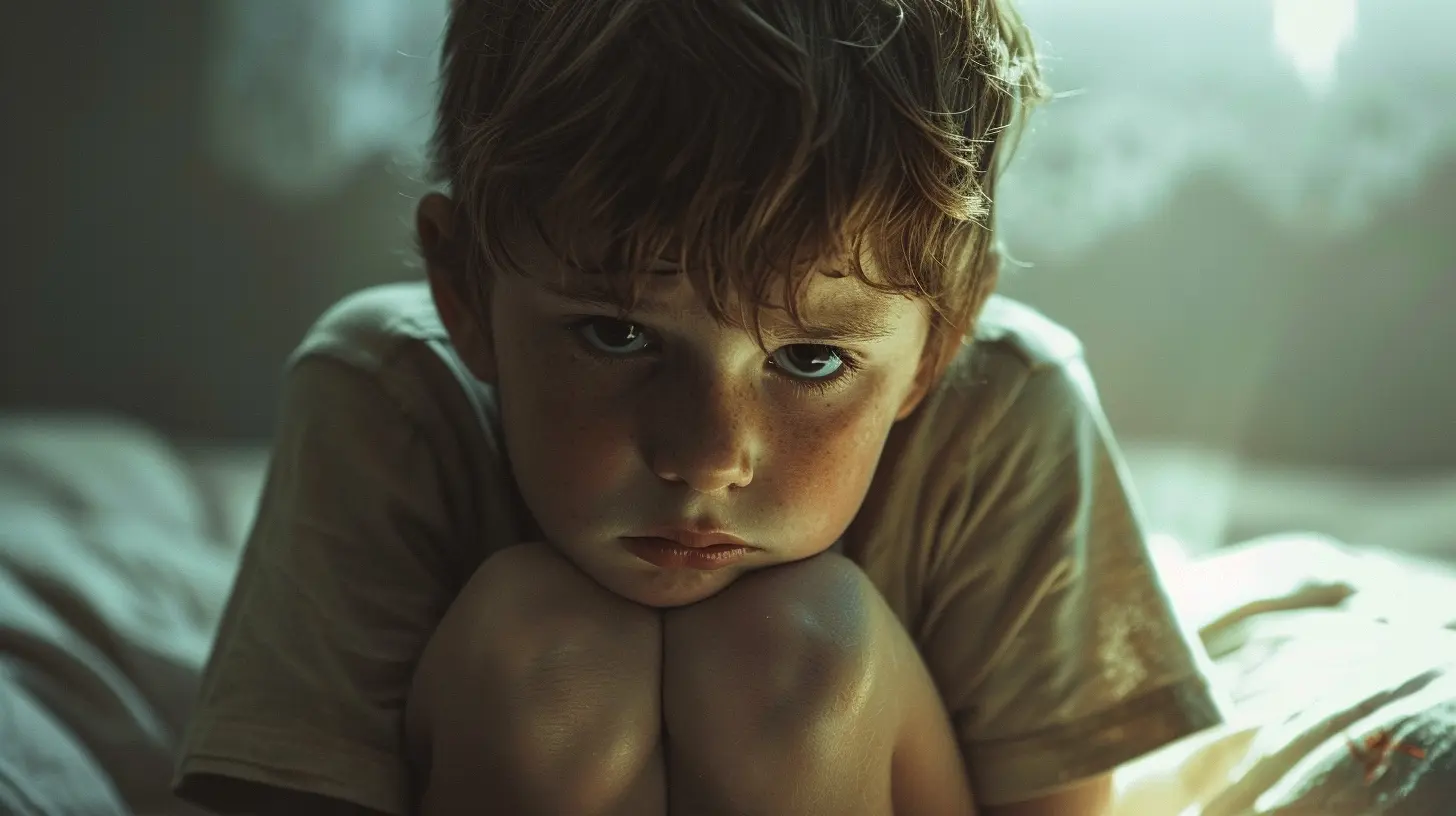How Childhood Trauma Impacts Long-Term Physical Health
27 May 2025
Let’s get real for a second — childhood trauma isn’t just about “bad memories” or emotional baggage. We often think that kids are resilient (and they are), but trauma in childhood can plant seeds that grow into deep-rooted issues well into adulthood. And I'm not just talking about mental health. For many, the signs show up in their bodies — literally.
From chronic pain to heart disease, the impact of childhood trauma runs deeper than we often recognize. In fact, science has been ringing the alarm bells for years. So, let’s break this down in a way that actually makes sense and helps connect the dots between those early, painful experiences and long-term physical health outcomes.

What Is Childhood Trauma, Anyway?
Before we start connecting trauma to physical health, let’s get clear on what we mean by “childhood trauma.”Childhood trauma refers to scary, dangerous, violent, or life-threatening events that happen before the age of 18. That could include:
- Physical, emotional, or sexual abuse
- Neglect
- Witnessing domestic violence
- Losing a parent
- Living with a parent who has substance abuse or mental health issues
- Experiencing poverty or homelessness
Basically, anything that overwhelms a child’s ability to cope and makes them feel unsafe for an extended period of time can leave behind trauma.
Now, you might think: "Well, lots of people go through tough times as kids and turn out fine." And that’s true. But for many others, trauma lingers — not just in memories or emotions, but in bones, organs, and immune systems.

The Science Behind Trauma and The Body
Here’s where it gets fascinating (and honestly, a little scary).When kids experience trauma, their bodies go into survival mode — fight, flight, or freeze. That means the brain signals the release of stress hormones like cortisol and adrenaline. That’s helpful in the short-term – it’s meant to protect you from danger.
But when this stress response is triggered over and over again without relief, the body gets stuck in "high alert" mode. It’s like having a smoke alarm that keeps going off, even when there’s no fire. This chronic stress does real damage, especially in a developing body.
Let’s dive into exactly how that long-term stress messes with physical health.
1. Immune System Takes a Hit
Think of your immune system as your body’s defense team. It fights off infections, heals wounds, and keeps things running smoothly.But when you’re always stressed (which is often the case for traumatized kids), your immune system becomes weaker. Chronic exposure to stress hormones suppresses immune activity, making you more prone to illnesses — from the common cold to autoimmune diseases.
And that’s not just theory. Research even links childhood trauma to higher risks of:
- Asthma
- Allergies
- Inflammatory conditions like rheumatoid arthritis

2. Heart Health? Yeah, That’s Affected Too
Let’s talk about your heart — the literal beating center of your body.Studies have shown that people with a history of childhood trauma have a greater risk of developing heart disease in adulthood. That includes high blood pressure, high cholesterol, and even strokes.
Why? Well, chronic stress does things like increasing inflammation and tightening blood vessels. Over time, that damages your arteries and puts a strain on your heart. Basically, trauma can hardwire the body for cardiovascular issues.
3. The Gut-Brain Connection: More Real Than You Think
Ever get "butterflies" when you're nervous? That’s a peek into how deeply your gut and your brain work together.This gut-brain connection is super sensitive to stress. And when kids endure trauma, their gastrointestinal (GI) tract suffers. That can manifest later as:
- Irritable bowel syndrome (IBS)
- Chronic stomach pain
- Digestive issues like bloating or constipation
It’s not just psychosomatic. Changes in gut bacteria, increased inflammation, and disrupted digestion are physical, measurable effects of trauma.
4. Chronic Pain and Inflammation — A Foundational Link
Trauma doesn’t have to leave visible scars to cause ongoing pain. Many adults with childhood trauma report chronic pain — migraines, back pain, joint stiffness — even when there’s no obvious physical cause.The culprit? Inflammation.
See, excess cortisol and a constantly activated nervous system trigger inflammation throughout the body. And inflammation is connected to all kinds of chronic conditions, from arthritis to fibromyalgia.
So, if you’ve been told “it’s all in your head,” you’re not imagining things. The pain is real.
ACEs: The Study That Changed Everything
If you’re wondering, “Is there research to back this up?” — oh, absolutely.One of the biggest studies on this is the ACEs study (Adverse Childhood Experiences), conducted by the CDC and Kaiser Permanente in the 1990s. Researchers looked at over 17,000 adults and explored how their childhood experiences impacted their health.
The results? Jaw-dropping.
People with higher ACE scores (i.e., more trauma in childhood) were significantly more likely to develop:
- Heart disease
- Lung disease
- Liver disease
- Obesity
- Cancer
- Diabetes
And not just by a little. The risk increased dramatically with each additional adverse experience.
Coping Mechanisms That Backfire
Here's the thing — not all damage comes directly from the trauma itself. Often, people adopt unhealthy coping mechanisms to manage the emotional pain, which then affect physical health.Think about it:
- Emotional eating → obesity, diabetes
- Smoking → lung disease, cancer
- Drug or alcohol abuse → liver damage
- Risky behaviors → injuries, accidents
These habits often start early. When a child doesn’t feel safe or loved, they may turn to anything that offers comfort, even if it’s harmful long-term.
Mental Health and Physical Health: Two Sides of the Same Coin
We can't talk physical health without touching on mental health. Why? Because they're linked — deeply and inextricably.Conditions like anxiety, depression, and PTSD are more common in people with childhood trauma. And those conditions bring their own physical symptoms:
- Sleep problems
- Fatigue
- Headaches
- High blood pressure
So, when someone is diagnosed with a physical illness but also has a trauma history, it’s essential to consider both angles. Treating one without the other is like patching a leaky pipe but ignoring the flood damage in the basement.
Breaking the Cycle: Is Healing Possible?
Now, I get it — all of this sounds pretty heavy. You might be thinking, “Am I doomed if I had a rough childhood?”Absolutely not.
The body and brain have this incredible thing called neuroplasticity — which means they can adapt, change, and even heal over time.
Here’s how people start to break the cycle:
1. Therapy
Working with a trauma-informed therapist can make a world of difference. Approaches like EMDR (Eye Movement Desensitization and Reprocessing), Cognitive Behavioral Therapy (CBT), or somatic therapy help process those early experiences and work through the old wiring.2. Mind-Body Practices
Yoga, meditation, and breathwork help regulate the nervous system. They calm that overactive fight-or-flight response and bring the body back into balance.3. Healthy Lifestyle Changes
Okay, I know this sounds like your typical advice, but hear me out.- Regular exercise reduces inflammation
- Eating a balanced diet supports gut health
- Good sleep rebalances stress hormones
These changes aren’t just surface-level fixes. They actually help reverse some of the biological toll trauma takes on the body.
4. Supportive Relationships
Positive social connections literally heal. Whether it's a friend, partner, support group, or mentor — being seen, heard, and loved acts like medicine for the nervous system.Final Thoughts: The Body Keeps the Score
The famous phrase by Dr. Bessel van der Kolk — “the body keeps the score” — couldn’t be more accurate.Childhood trauma doesn’t simply fade with time. It embeds itself in the body, shaping how we feel, function, and survive. But understanding this connection is the first step to healing.
If your body is crying out through chronic illness or unexplained health issues, it's not betraying you. It might just be trying to tell you a story that started long ago.
So, you’re not broken. You’re responding to a lifetime of experiences — and with the right tools and support, you can move toward healing and wholeness.
all images in this post were generated using AI tools
Category:
Mind And Body ConnectionAuthor:

Alexandra Butler
Discussion
rate this article
3 comments
Eloise McCallum
Oh sure, let’s just blame childhood trauma for those pesky backaches and occasional cravings for chocolate. Who knew emotional baggage could manifest as a physical condition? Thanks, psychology, for connecting all the dots that were probably just coincidence!
June 17, 2025 at 3:16 PM

Alexandra Butler
Childhood trauma can indeed have lasting effects on physical health, with research showing connections between emotional experiences and conditions like chronic pain and cravings. It's complex, but understanding these links can aid healing.
Delta Cummings
This article sheds light on a crucial topic! It's fascinating (and sometimes shocking) how childhood trauma can shape our physical health later in life. Understanding this connection empowers us to address and heal from past experiences. I appreciate the insight shared here—it's a reminder of the importance of mental wellness throughout our lives!
May 30, 2025 at 2:31 AM

Alexandra Butler
Thank you for your thoughtful comment! I'm glad you found the article insightful. Addressing childhood trauma is indeed vital for our overall well-being.
Celeste Matthews
Oh great, just what I needed—another reason to blame my childhood for my back pain. Thanks, childhood trauma! Can’t wait to add “psychological baggage” to my list of ailments at my next doctor’s visit.
May 27, 2025 at 4:32 PM

Alexandra Butler
I understand your frustration! It's true that childhood experiences can have lasting effects, but recognizing them is the first step towards healing.



